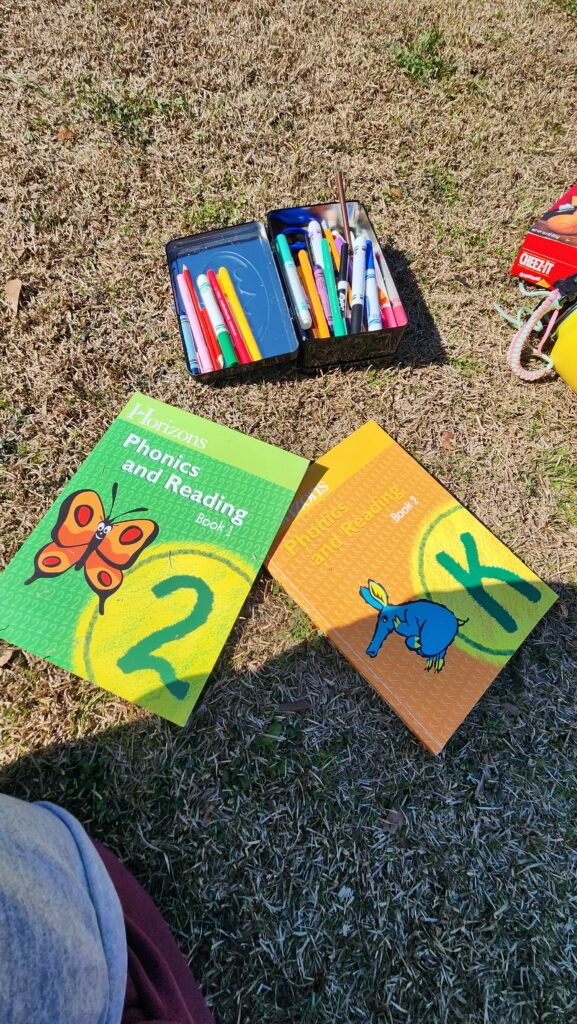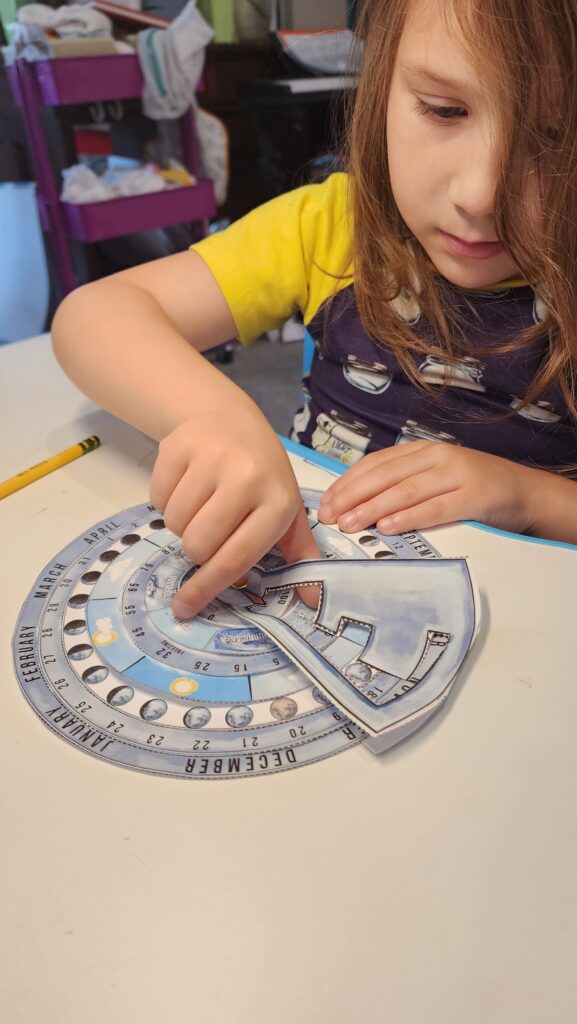Welcome to Part 7 of the “How to Start Homeschooling” series. Today, I'm turning the spotlight on planning – a skill that transforms homeschooling from a daunting responsibility to an enjoyable privilege. Effective planning and time management are the compasses that guide your educational adventure, ensuring that you and your child remain on the path to success. Let's explore some strategies for planning your homeschool and maintaining the balance between academic obligations and the joy of extracurriculars.
If you haven't had a chance to read the previous articles in this series, be sure to head to the How to Start Homeschooling Series page.
Mastering the Basics of Planning and Time Management
Homeschool planning starts with setting clear goals and creating a flexible routine that accommodates the ebb and flow of home life. Here are some basic tips to help you get started.
Set Yearly Goals:
Always start with the big picture and work your way down. What do you want your child to learn this year? What would need to happen for you to finish the year feeling accomplished? If you want to make your child's curriculum from scratch and need help with this, using your state's subject standards for your kid's grade can be a fantastic idea of what your child can learn in a year. If you are purchasing a pre-planned curriculum, then go off the goals they set for grade completion. Also take this time to decide how many school days you want or need to have in a school year at a minimum. If you bought a curriculum, then go off the recommended days they list, as long as it fits the minimum required by your state. This will help with other areas of planning. When setting yearly goals, you want to set them by subject. Continue to set goals by subject until you get to daily goals.

Set Monthly Goals:
Now that you've figured out the big picture, break it up according to how many school days you want to school and assign certain topics per month. This is good for mastery type learning. If you desire spiral type learning, then assigning topics can get a little complicated. I will make a template to help with drafting a spiral learning course of curriculum. If using a pre-made curriculum, then figure out how many lessons and their topics that are expected to be completed in a month. These will be your monthly goals. Don't forget to keep your goals for each subject separate.
Set Weekly Goals:
Identify what you want to achieve each week in various subjects. If using a pre-made curriculum, this is already planned out for you. The only things you might want to add are any extracurriculars you want to do. If using your own curriculum, then divide the monthly goals into 4 weeks with a review day at least once a week. They are usually already built into pre-made curriculums. Don't forget to keep goals for the week in each subject separate.
Daily To-Do Lists:
Break down your weekly goals into manageable daily tasks. This is where you combine all your subjects into the day. For pre-made curriculums, you will go off what they have planned for you. If you made your own curriculum, then you will combine tasks and write out their subjects, and make note if their subjects overlap. For example, measuring teaspoons of baking soda for a science experiment is also math and life skills. If they read the directions and information on the science experiment, then it's also learning how to read informational and scientific texts. You've just covered 4 subjects in one activity. The daily plan is where you want to get this level of detail. In states where there is heavy oversight, this is what they love to see. If you need help figuring out all the subjects your activities cover, punch your list of planned activities into an AI helper like ChatGPT and ask it to give you all the educational subjects each lesson will cover.
It might seem like this is extra work that isn't really needed, but listen to me. Writing in such detail for your daily lessons is not just for you to keep on track and stay on the path. It's also for your mental health. Seeing all the topics and things learned in a day from just a couple of activities will really give you peace of mind that your child is learning a lot. I can't tell you how many times I've seen moms say, “We only made some soup, colored some pictures, and did a puzzle today. I feel like such a failure and am so scared my child will get behind.” What they didn't realize is they did wayyy more. Let's look at just one of these activities and the many things it covers.
Animal Puzzle:
- Cognitive Development:
- Problem-Solving: Figuring out where each piece goes requires trial and error, enhancing critical thinking and problem-solving skills.
- Shape Recognition: Identifying the shapes of puzzle pieces and where they fit supports the development of geometric awareness.
- Memory: Remembering the shape, color, and place of pieces that have been tried and didn’t fit helps improve short-term memory.
- Physical Skills:
- Fine Motor Skills: Manipulating puzzle pieces develops hand-eye coordination and dexterity.
- Hand-Eye Coordination: The action of picking up, placing, and adjusting puzzle pieces enhances coordination between vision and physical movement.
- Emotional and Social Development:
- Patience and Perseverance: Completing a puzzle, especially a challenging one, teaches patience and the value of persisting through difficulty.
- Self-esteem: The accomplishment of finishing the puzzle boosts confidence and provides a sense of achievement.
- Cooperation: Working on a puzzle with others fosters teamwork and communication skills.
- Language Skills:
- Vocabulary: Discussing animals and their environments while working on the puzzle can introduce new words and concepts.
- Following Instructions: Completing more complex puzzles may require understanding and following verbal or written directions.
- Science and Knowledge:
- Animal Recognition: Identifies various animals, learning their names, appearances, and possibly some characteristics or habitats.
- Habitats and Ecosystems: Puzzles themed around specific environments (jungle, ocean, savannah) can teach about different habitats and the animals that live in them.
- Conservation Awareness: Puzzles can also introduce themes of endangered species and the importance of protecting natural habitats.
- Mathematics:
- Sorting and Categorizing: Sorting pieces by color, edge pieces versus middle pieces, or by parts of the animal introduces basic concepts of classification.
- Spatial Awareness: Understanding how pieces fit together to form a whole improves spatial perception and awareness.
- Art and Creativity:
- Color Recognition: Identifying and matching colors of the puzzle pieces.
- Creative Thinking: Imagining the complete picture and how individual pieces contribute to the overall image fosters creativity.
- Cultural Awareness:
- Cultural and Geographical Knowledge: Puzzles featuring animals from different parts of the world can introduce elements of geography and cultural diversity.
Use a Planner:
A physical or digital planner can help you visualize and organize your schedule. I have gone through many physical planners, and then also digital planners, and then back and forth ever since homeschooling. The truth is, you're probably going to do the same. Different seasons, aging kids, changing curriculums, and really any change can lead you to changing the method you plan and keep track of everything. So far, my favorite digital planner has been Homeschool Planet and my favorite physical planner has been the A+ Homeschool Planner. I've even gotten planners for my kids to use and this was my daughter's favorite, Global Datebooks Dated Elementary Student Planner.
Prioritize Tasks:
Recognize that some tasks are more important than others and tackle those first. For a few months, I started with our most fun topics first, the extracurriculars, because I thought it would motivate the kids for homeschool that day. Well it worked, but by the time it was time to do core work, I was too tired from prepping and doing all the fun stuff, to do the basic stuff. It was also close to lunch time at that point and the kids were getting less patient and more hangry. So we wouldn't do it, and their core subjects ended up getting tossed to the back burner.
Now I make sure to complete reading and math first, and really focus on them, not just give them the work and walk away. I learned being very hands on while they do their work has encouraged focus and made things go faster. And when things go faster, we can get to the fun stuff sooner, and everyone is happy because we are done by lunch. : )
Time Blocking:
Assign specific blocks of time for focused learning, allowing for breaks to keep your child engaged. Honestly, I don't really do this for my kids very often. I do however, do it for myself, a lot. When I did time blocking for my kids, I didn't see much change in their focus. In fact, I feel like we lost a lot of time and motivation that way. Right when the kids were on a roll, it would be time for a break, and then they would whine having to come back to the work, and they would have to build up their roll all over again. I don't feel like time blocking is for younger kids unless you change the subject being learned every time you take a break, or if you have older kids who can mentally prepare themselves to get back to work when their break is over. Otherwise, we just do subject blocking. We will focus on one subject, get through the work, and then take a break. I'd suggest you try it with your family and see if it works. It can't hurt to try!

Balancing Academics and Extracurricular Activities
A well-rounded homeschool experience includes both academics and extracurricular activities. Balance is key; too much focus on one can lead to burnout or missed opportunities in the other. Consider these points:
- Integrate Learning: Look for ways to combine academics with interests, such as a science project that complements a sport your child enjoys or if your kid likes card games, make your own with animals or people you're learning about.
- Flexibility: Be prepared to adjust your schedule for unexpected learning opportunities or changes in interest. Some days you're going to just want to do the fun extracurriculars, because fun learning is better than no learning. There are also going to be days where your schedule doesn't allow for the extracurriculars or for the core work.
- Quality Over Quantity: It's better to be fully engaged in a few activities than to spread your child too thin. We only sign up for 1 extracurricular, and 1 co-op, and 1 playdate a week. This works perfectly for us and allows plenty of rest time for our family. My and my eldest daughter have low social meters and do best with this. However, my middle daughter loves socialization, so I will often invite the neighbor kids over to spend time with her and my eldest will usually go to a different room.
Conclusion
Effective planning is the backbone of a successful homeschooling experience. With the right approach, you can create a harmonious blend of academic learning and enriching extracurricular activities. Join us for the next installment in our series, where we delve into the world of socialization.
Read Part 8: Socialization here!
Don't forget to subscribe to my newsletter to get weekly freebies, and more how-to information for your homeschool!






